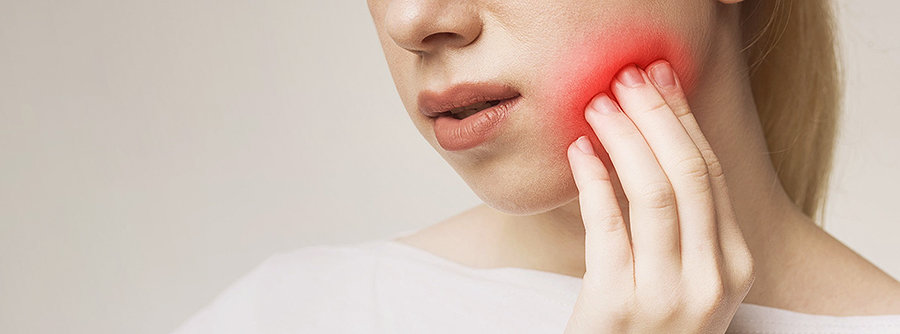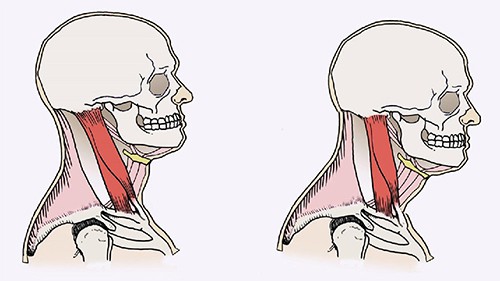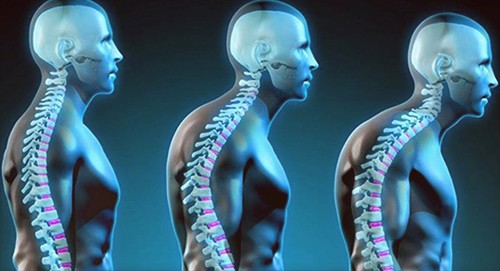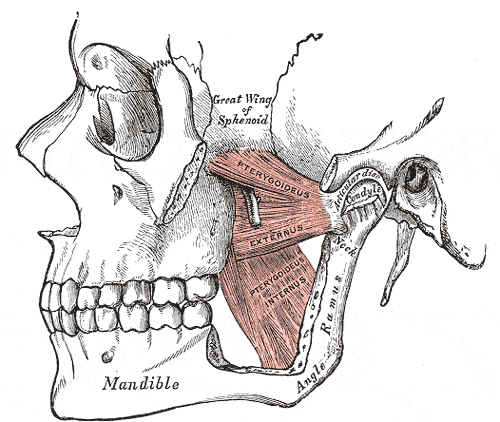
When you think of posture, you don’t immediately think that it affects your jaw. Bad posture has many consequences, from back pain to an unsightly figure. But most people don’t realize that posture can affect your jaw in more ways than one. Posture can have disastrous results on facial aesthetics and boils down to more than just not being “slouched.”
Forward head posture can often cause pain and jaw problems. Though not fully proven, there are links to posture and temporomandibular joint problems. When proper posture is not observed, the head moves forward to compensate for the imbalance, and the tongue drops. The jaw and the surrounding area is placed under a lot of pressure.
Posture as a part of how the jaw operates is not a frequent topic of discussion. Usually, when thinking about posture we connect it to back problems or neck problems. However, the body is connected in more ways than just one.
The good thing is that posture is something that you can easily fix, barring severe medical issues. You can take steps to ensure that you are practicing and maintaining proper posture.
Forward Head Posture

Forward head posture occurs because of slouching at your desk, computer, cell phone, TV, etc. As you lean forward to get closer to what you want to look at, the body tries to balance itself by moving the head forward. For every inch your head moves forward, your muscles have to work overtime to carry this new weight and prevent your face from falling into your chest.
This kind of bad posture is commonly seen around any and all forms of electronics. Most people are bent over on their phones or working on their laptops. It is especially easy to feel like you can relax and loosen up on your posture when you are in the comfort of your own home.
Doing this, however, can have consequences. Forward head posture causes the muscles on the back of the head to be in constant traction. It exerts additional pressure on the suboccipital nerves because it is constantly trying to lift the chin. In effect, this causes headaches at the base of the skull. Forward head posture can also cause back and neck discomfort as well as numbness in certain areas.
Forward head posture is usually exhibited by slumped and rounded shoulders, causing the head to move anterior to its normal axis.

According to Ayub et al. (1984), when this happens, the submandibular muscles can pull the mandible towards the maxilla and affect the jaw’s resting state. This improper posture exerts pressure on the masticating muscles and the surrounding area.
Good Posture
Good posture has many benefits and can help you avoid potential problems with your back, neck, jaw, and other areas. Practicing proper posture is a continuous process and may take some time to get used to, and that’s an understatement. Changing your daily unconscious habits is extremely difficult. When you are used to poor posture, you may have to take extreme measures to fix it.

If you have been slouching for the better portion of your life, proper posture will be pretty uncomfortable at first. It will take a lot of getting used to for it to finally feel natural.
If you are wondering if you have proper posture or not, do this quick wall test:
- Stand in front of a wall with your back to it. Keep your head in a neutral position, not too forward, not too backward. Ensure that your shoulder blades, the back of your head, and your buttocks are touching the wall. The heels of your feet should be about 2 to 4 inches from the wall itself. Your chin should be parallel to the ground.
- Next, slide your hand between the small of your back and the wall. Make sure that your hand is flat and is parallel to the wall. If you are practicing proper posture, you should be able to barely slide your hand into that small space between the small of your back and the wall.
- If you detect that your hand does not fit snugly or you can even fit your forearm in there, your posture needs work. Pull your belly towards your spine and closer to the wall to shrink the in-between space until your hand fits snugly in the area.
- If you find that the space is too tight for your hand to fit in, this also needs a remedy. Arch your back a little bit at a time until your hand has enough space to fit just right.
- You can now walk away from the wall holding that same posture. If you want to, you can check periodically with any wall to see if you are still maintaining the correct posture.
Trying to hold proper posture is not an easy task, especially when all your life, you have been slouching. Take time to practice it consistently, and eventually, you will get the hang of it.
Effects on the Jaw
Though not exactly obvious, the jaw is also a body part that is affected by improper posture. Multiple studies are linking Temporomandibular Joint Disorder (TMD) to a lack of proper posture. Though these studies are not conclusive, there are still clear links between the two.
Darling et al. (1984) discussed that less-than-ideal posture could affect neuromuscular influences on the masticatory system. This can, in turn, influence the resting position of the mandible. Mandibular closure is also something that bad posture can negatively affect. The masticatory system is a group of parts forming a functional unit. It consists of the teeth, jaws, temporomandibular structures, the muscles involved in chewing, and the other structures supporting and surrounding it.

This continuously added pressure on the mandible can cause pain and discomfort in the jaw.
As mentioned before, posture has been linked with Temporomandibular Joint Dysfunction or TMD. This dysfunction causes discomfort and pain in the jaw, headaches, and other symptoms. Studies linking posture and TMD are indicative of how posture affects the jaw and comfort.
Improving Posture and Jaw Aesthetics
Improving posture after years of slouching is a daunting task. It will take dedication and continually checking on oneself. Don’t expect to improve your posture overnight. Chances are, that ideal posture will probably be uncomfortable for you at first and will sound nothing like the ideal and beneficial posture it is always made out to be. However, once practiced regularly, they can help avoid discomfort and future pain caused by improper posture.
But, posture does not only come into the picture when you are standing or walking. It also applies when you are sitting at a desk or using your phone. Before doing anything else, consider your working space, study space, or wherever you spend the most time sitting. If you have a desk job or you are a student who is on their computer a considerable chunk of the day, consider adjusting your equipment to be more ergonomically viable.
Your equipment and everyday office objects should facilitate proper posture, not discourage it. If you are in an area you can control, it helps to surround yourself with items that promote proper posture. Choose the right table height, the right incline, and make sure that you are not straining yourself.
Here are a couple of suggestions to take with you:
- When walking, stand tall, and breathe properly. Keep your shoulders relaxed and do not jut your buttocks out.
- Stay balanced and distribute weight equally on both feet. Leaning on one foot more than the other may feel more comfortable, especially when you have been standing for a long time. However, this could also cause muscular imbalances and will not help you with your posture.
- Try not to tilt your head forward, backward, or any other direction. Try to keep it as neutral as possible.
Of course, this is not an exhaustive list of what you can do to improve your posture, but hopefully, they will help you along the way. For more info, visit our posture guide.


